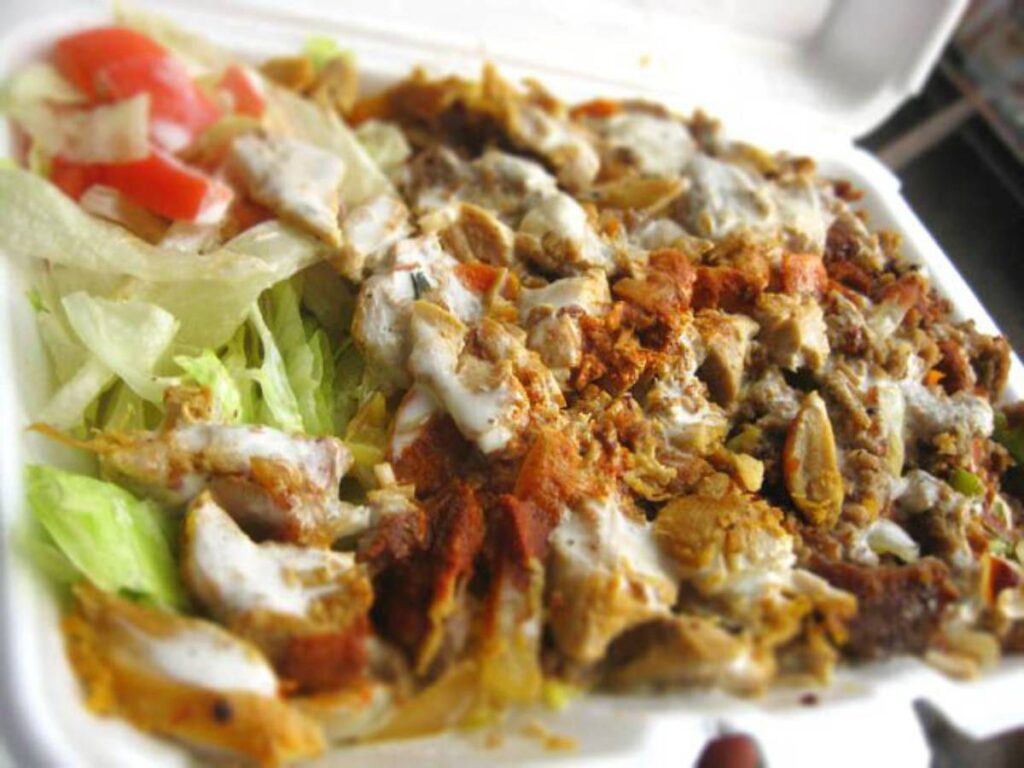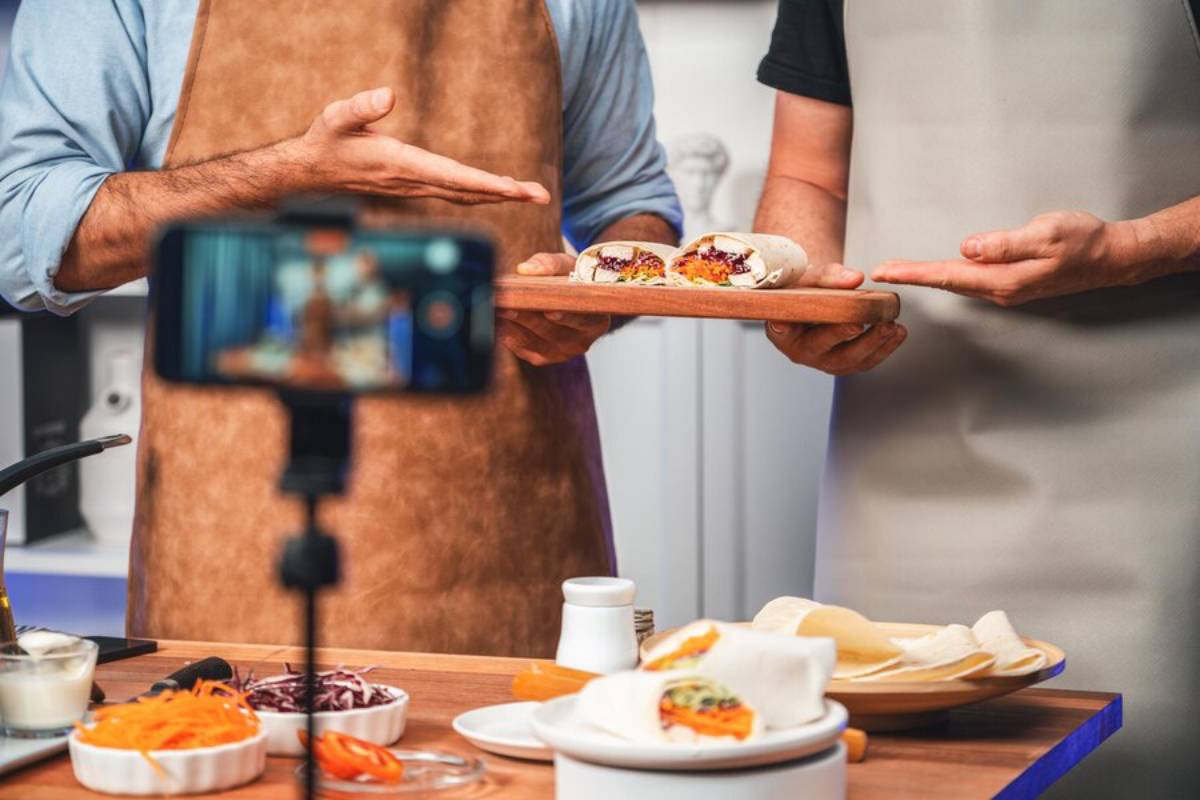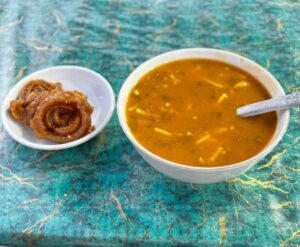The Food & Recipes Blog

NYC Halal Carts: The Rise of Gyro and Rice
Stroll down almost any busy avenue in New York City and you’re bound to catch a whiff of something smoky, spicy and savoury. That tantalising aroma? It’s most likely from one of those famous NYC halal carts, which have become a cornerstone of the city’s street food. Where bagels and pretzels used to dominate, gyros and rice are major players, changing how locals and tourists eat on the run.
In this post, we’re diving into the incredible story of halal street food in NYC, from how gyro and rice became the quintessential New York meal for many to what turned these little stalls into a billion-dollar culture and cuisine. From immigrant origins to global behemoth, you’ll learn how this fiery food has made its home in the city that never sleeps.
The Origins of NYC Halal Carts
The Immigrant Backbone
The rise of halal food in New York is inextricably linked with the stories of immigrant entrepreneurs. In the early 1990s, Egyptian and other Middle Eastern immigrants began setting up food carts offering halal-certified meals. “Halal” refers to food prepared by Islamic dietary laws, and the carts catered primarily to Muslim taxi drivers who found few halal-friendly options during long shifts.
These carts were mobile, affordable, and accessible—perfect for busy workers and budget-conscious eaters.
From Niche to Mainstream
What began as a niche offering quickly found favour among non-Muslim New Yorkers, thanks to the flavourful fusion of spices, generous portions, and affordable prices. The typical offering—gyro or chicken over rice with white sauce and hot sauce—became the defining dish of halal carts. By the late 1990s, these carts no longer catered to a small audience but had become a citywide staple.
What’s in a Halal Plate?
The Anatomy of Gyro and Rice

The classic gyro and rice plate typically includes:
- Spiced lamb or beef (gyro) or grilled chicken
- A bed of fragrant yellow basmati rice
- A crisp salad—often lettuce, tomatoes, and cucumbers
- Optional pita bread
- The famed white sauce (cool and creamy) and red hot sauce (fiery and bold)
These elements combine to create a flavour-packed meal that will satisfy the stomach and the senses. Importantly, all ingredients adhere to halal dietary standards, making them accessible to a broader audience.
The Magic of the Sauces
While the meat and rice are foundational, the white and hot sauces bring the dish to life. The white sauce is usually a yoghurt- or mayonnaise-based dressing with hints of lemon, garlic, and herbs. The hot sauce is not for the faint of heart—it’s often a concentrated chilli blend that adds a dramatic kick.
Why Halal Street Food Took Over NYC
Affordability and Generosity
In a city known for its high cost of living, halal carts offer unbeatable value. A hearty portion of gyro and rice usually costs between $6 and $10—an affordable price for a filling, high-protein meal. This has made it a top choice for office workers, students, and tourists.
Speed and Accessibility
Street food thrives on convenience, and halal carts are no exception. With quick service and central locations, they cater perfectly to New York’s fast-paced lifestyle. You can grab a hot meal on virtually any street corner—no reservations or table required.
Cultural Appeal and Diversity
NYC halal carts don’t just serve food—they reflect the city’s cultural mosaic. While most carts stick to the gyro and rice formula, others offer falafel, kofta, kebabs, and even South Asian variations. This diversity has helped maintain a broad appeal and encouraged culinary innovation.
Case Study: The Halal Guys and the Branding Boom
One cannot discuss NYC halal carts without mentioning The Halal Guys. Starting as a modest food cart in 1990, the brand now boasts international franchises from California to Kuala Lumpur. Their success lies in:
- Consistency in flavour and quality
- A strong, recognisable brand identity
- Social media and word-of-mouth marketing
The Halal Guys transformed what was once a street hustle into a global food empire, highlighting how halal street food has evolved from necessity to trend.
The Business of Halal Carts
Regulations and Licensing
Running a halal cart in New York is no easy feat. Vendors must secure multiple licences from the Department of Health and Consumer Affairs. They also face:
- Strict food safety inspections
- Competition for high-traffic vending locations
- Ongoing maintenance and storage of mobile units
Despite the challenges, many vendors persist because of the high earning potential and the freedom of self-employment.
Economic Impact
According to the Street Vendor Project, food carts and trucks generate over $300 million annually in NYC. Halal carts represent a significant share of this market. They also create jobs for vendors and supply chain workers, including butchers, produce suppliers, and manufacturers of sauces and packaging.
Consumer Trends: Why Gyro and Rice Still Reign
Health-Conscious Shifts
While fast food is often associated with poor nutrition, gyro and rice plates offer a balanced meal—protein, carbohydrates, and vegetables. Many consumers see them as a healthier alternative to burgers or fried chicken, particularly when grilled chicken or falafel is chosen.
Social Media Buzz

Instagram and TikTok have been key in promoting halal street food culture. Food bloggers and content creators frequently feature halal carts in taste tests, city food tours, and viral challenges. The vibrant colours and generous sauce drizzles make for shareable, eye-catching content.
Late-Night Cravings
Another reason halal food dominates is its extended operating hours. Many carts stay open well past midnight, offering post-party sustenance to club-goers and night workers. Few other options match the taste, price, and availability during these late hours.
Beyond NYC: The Halal Cart Influence
Spreading to Other Cities
Inspired by NYC’s success, cities like Chicago, Toronto, London, and Sydney have developed halal street food scenes. Local entrepreneurs replicate the NYC formula—gyros and rice, signature sauces, and street-side service—to similar acclaim.
From Food Carts to Food Halls
Today, halal vendors are found in indoor food markets, brick-and-mortar restaurants, and meal delivery apps. This growth signifies halal’s shift from street fare to mainstream cuisine while retaining its original charm.
More Than Just a Meal
NYC halal carts are so much more than quick bites—they are emblems of entrepreneurial spirit, cultural diversity, and gastronomic innovation. The lasting appeal of gyros and rice speaks to their universal allure: flavourful, filling, and fast.
As the halal street food movement continues to spread throughout New York and worldwide, it’s safe to say that these humble food carts have secured their place in the city’s cultural and gastronomic fabric.
The next time you find yourself in the Big Apple, forget about fast food and the greasy comforts you picture when meandering between those tall buildings; just follow that scent of spices—you might find your new favourite meal.
Your love for halal food and street food? Tell us about your favourite halal cart in the comments below, or tag us on your next gyro and rice adventure on social media. Keep your appetite and eyes open, and support your local suppliers!









